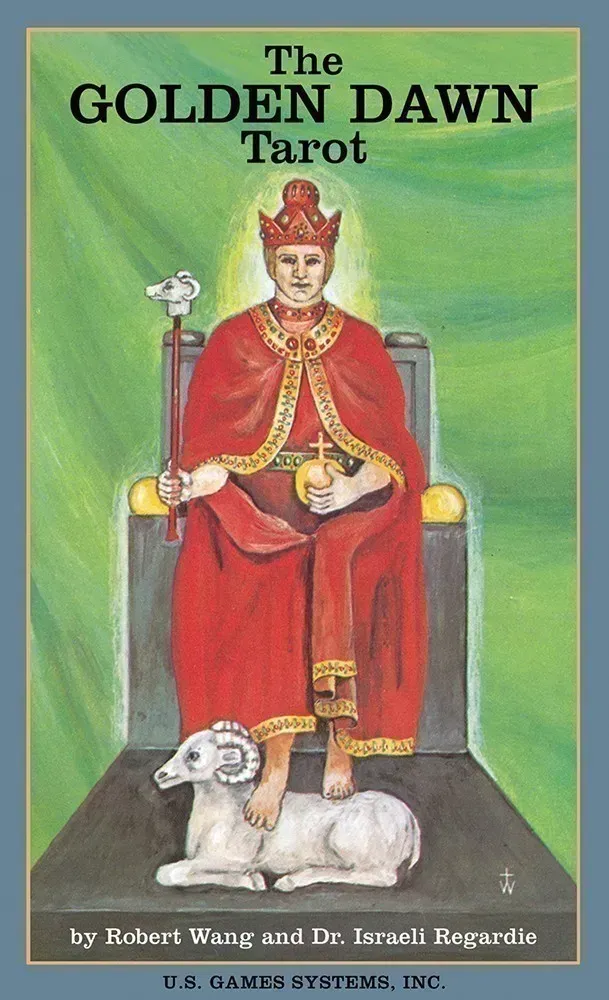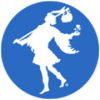
More than thirty years ago, U.S. Games Systems published the The Golden Dawn Tarot, revealing for the first time many truths and secrets of the Hermetic Order of the Golden Dawn, and its interpretation of the tarot. Dr. Robert Wang has faithfully rendered in authentic detail each card of The Golden Dawn Tarot deck based upon the esoteric notebooks of MacGregor Mathers. The card designs follow the symbolic framework of the Inner Tradition formulated by Mathers. Dr. Israel Regardie, the leading author/scholar in the occult field, skillfully guided the creation of The Golden Dawn Tarot, the last great secret teachings of the Order. The deck is now a classic, its symbols and references familiar to tarot experts everywhere.
-
ISBN978-0-91386-616-0
-
Size78 cards, 3.125" x 5"
-
LanguageEN, ES
-
AuthorDr. Israel Regardie
-
ArtistRobert Wang
What Customers Are Saying About The Golden Dawn Tarot
"The Golden Dawn Tarot" is an esoteric deck, based on the systems used by the Hermetic Order of the Golden Dawn. Wang worked under the direction of Israel Regardie, with card interpretations based on those developed by S. L. MacGregor Mathers. In his foreword, Stuart Kaplan notes that the Golden Dawn Society included as its members some of the foremost occultists and writers of its time. As part of their sacred oath, they were sworn to secrecy. Based upon the esoteric notebooks of some of these members, under the guidance of Dr. Israel Regardie, Wang has faithfully produced, in authentic detail, each card in the Golden Dawn Tarot.
Kaplan sees the publication of this deck as an important "missing link" in the development of Tarot. His suggestion is to study this deck along with other decks that evolved from the work of Golden Dawn members, such as the "Rider-Waite Tarot" (by A. E. Waite and Pamela Coleman Smith), the "Builders of Adytum" (BOTA) deck issued under the guidance of Paul Foster Case, and the "Thoth Tarot", by Aleister Crowley and Lady Frieda Harris.
Wang, in his introductory notes, refers to the "Golden Dawn Tarot" as the only truly esoteric deck ever to be published. It is also the only deck to reach public view that was designed for the exclusive use of a powerful secret fraternity. Included in this deck is esoteric symbolism that has been kept shrouded in mystery as part of the Western Esoteric Tradition. As does Kaplan, Wang notes that this is the deck from which some of the greatest esoteric writers of our age developed their ideas about the Tarot.
Wang notes that the basic design of the cards comes from the work of S. L. MacGregor Mathers, following the framework of the Inner Tradition. Credit goes to Moira Mathers, S. L. MacGregor Mathers wife, for illustrating the original cards. Also noted is that after initiation into the grade of "Adeptus Minor", one of the tasks of the adept was to hand-paint a copy of the Tarot deck.
According to Wang, the purpose of the Tarot is to teach -- teach about the nature of the universe, and about man's relationship to the universe. Wang also sees the Tarot as illustrating the energies of the mystical system of Qabalah. The use of the Tarot for divination is seen as a means to provide an introduction to the visual patterns and subtle energies of the Tarot. In this respect, the true worth of the cards comes from repetitive usage, which helps to stimulate the unconscious and help develop psychic powers.
One spread is given in the LWB (Little White Book) for use by the reader, and it is simply termed the "Fifteen Card Method of Tarot Divination". The spread was specifically developed so that the meanings of the cards could be determined from their relationship to neighboring cards (Elemental Dignities), rather than using reversals. The spread is set out in groups of three, and is not difficult to lay down, or to interpret.
There are 84 cards that come with this deck: the traditional 78 cards of the Tarot, four blank white cards, a card illustrating the positions on the Tree of Life, and a card listing in text the "Key to the Tarot on the Tree of Life". The cards themselves are 3" by 5", of good quality, glossy card stock. The backs have a 1/2" white border, followed by a 1/2" green border, with symbols at the four corners, midway down each side, and in the middle of the bottom of the card. In the center we see a Cross, color coded by element, with a glyph of the Tree of Life in the middle. This graphic alone is well worth study for the symbolism that it contains.
There are some very interesting aspects to this deck, such as the appearance of luminescence around certain figures or objects (the upper body and head of the Fool; the entire body of the Magician, High Priestess; the head and scepter of the Empress, and the bird behind her; the head of the Emperor; the head and upper body of the Hierophant; the head and lamp of the Hermit; all of the Wheel of Fortune; the head of Justice; the head of the Hanged Man; all of Temperance; the Star; the three figures on the Moon; the male and female figures in Judgment; the four corner glyphs and the center figure in the World; the figures in the Court Cards).
For the most part, the symbols and figures used in this deck will be familiar to those readers using traditional decks. The Fool becomes a small child, plucking fruit from a tree; the High Priestess stands facing the reader, a cup held in front of her with both hands; the Chariot is shown as riding through the sky; the Hanged Man is suspended over water; there is a fire in the background of the Temperance card; yods appear in the sky, under the glyph of the moon, in the Moon card.
All of the suits show a stark white background, with a hand coming out of the clouds, holding the requisite number of suit symbols for each card. The Ace of Wands shows a tri-part wand, surrounded by Yods. Included in the suit of Cups is the use of flowers, as well as fish in the Two of Cups. The suit of Swords includes a red flower in some cards, with red Yods in other cards. The suit of Pentacles makes use of a "living branch" -- a branch that shows green leaves, as well as the suit symbol. For all of the suits, Kings are shown on horseback, Queens are shown seated on a throne, Princes are shown driving chariots, and Princesses are shown standing, appearing to be wearing some type of armor.
Each time I use this deck, I see more and more symbolism in it. It is easy to use, would fit well into readings, comparative readings, journaling, story, meditation, ritual, and ceremony. There is a companion book for this deck, written by Robert Wang ("An Introduction To the Golden Dawn Tarot") that is very helpful in working with this deck. For a student interested in studying the esoteric aspects of the Tarot, for someone looking for an alternative deck to offer their clients as a choice for doing a Tarot reading, or for a Tarot collector, this is a "must have" deck.
-- Bonnie Cehovet, Aeclectic Tarot


















